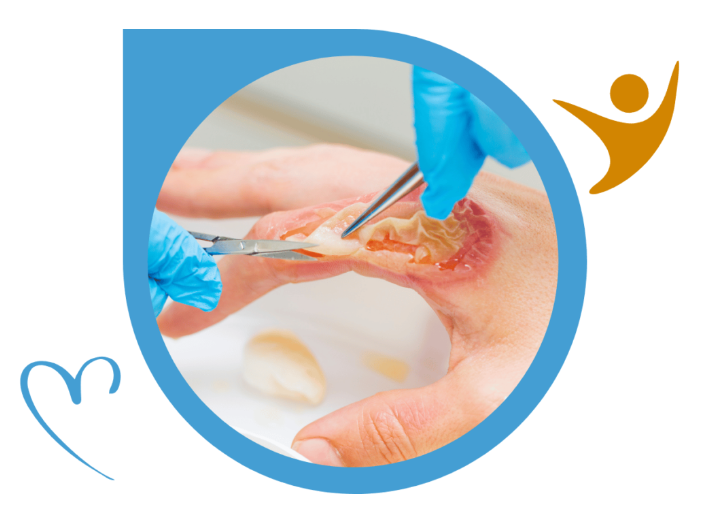Parkinsons Disease is a progressive neurological disorder that affects movement and coordination. It primarily develops when nerve cells in the brain that produce dopamine, a chemical responsible for smooth and controlled movements, begin to degenerate. The loss of dopamine leads to symptoms such as tremors, stiffness, and difficulty with balance. Parkinsons Disease is not only about physical symptoms; it can also impact mental health, sleep patterns, and overall quality of life. Understanding the disease is crucial for early detection, proper treatment, and improving the daily lives of those affected. While Parkinsons Disease is more common in older adults, it can develop in people as young as 40. Awareness and education play a significant role in managing this condition effectively.
Early Signs and Symptoms
Recognizing the early signs of Parkinsons Disease can help in timely medical intervention. Motor symptoms often appear first, such as a slight tremor in one hand, muscle stiffness, slowness in movements, and challenges with posture and balance. Non-motor symptoms can also occur and are sometimes overlooked, including sleep disturbances, mood swings, depression, anxiety, constipation, and fatigue. Subtle changes like a softer voice, decreased facial expressions, or difficulty with handwriting may also be early indicators. Early detection allows patients and caregivers to start treatments that can slow symptom progression and improve quality of life. Regular check-ups with a neurologist are essential if symptoms persist or worsen over time. Being observant of small changes in movement or behavior can make a significant difference in managing Parkinsons Disease.
Causes and Risk Factors
The exact cause of Parkinsons Disease remains unknown, but several risk factors have been identified. Genetics play a role, as a family history of the disease can increase susceptibility. Environmental factors, such as exposure to pesticides, toxins, or repeated head injuries, are also linked to higher risk. Age is a major contributor, with most diagnoses occurring after 60, although younger-onset Parkinsons Disease is possible. Men are slightly more likely to develop the condition than women. At the core of Parkinsons Disease is the loss of dopamine-producing neurons in the brain, which disrupts movement control. Researchers continue to study how these various factors interact to trigger the disease. Understanding these risks can help individuals take preventive measures and seek early medical advice.
Diagnosis and Medical Evaluation
Diagnosing Parkinsons Disease involves a combination of medical history review, physical and neurological examinations, and symptom observation. Physicians evaluate motor skills, reflexes, balance, and coordination. Imaging tests such as MRI or PET scans may be used to rule out other conditions, although no definitive test exists for Parkinsons Disease. Blood tests can help exclude other causes of symptoms. Tracking symptoms over time is also crucial for accurate diagnosis, as Parkinsons Disease progresses gradually. Early and accurate detection is essential for initiating effective treatment strategies. Doctors also differentiate Parkinsons Disease from other movement disorders to ensure proper care.
Treatment Options
Treatment for Parkinsons Disease is personalized and can include a combination of medications, therapies, and sometimes surgery. Medications like Levodopa, dopamine agonists, and MAO-B inhibitors aim to increase or mimic dopamine levels to improve motor function. Surgical interventions, such as Deep Brain Stimulation, may be recommended for patients whose symptoms do not respond well to medications. Non-pharmacological therapies like physical therapy, occupational therapy, and speech therapy are essential for maintaining mobility, daily functioning, and communication. Lifestyle changes, including regular exercise, balanced nutrition, and mental health support, play a significant role in symptom management. Exercise, in particular, helps improve flexibility, strength, and balance while reducing rigidity. Patients are encouraged to work closely with healthcare providers to adjust treatments as symptoms evolve.
Living with Parkinsons Disease
Daily life with Parkinsons Disease requires adaptation and support. Maintaining independence and quality of life is possible with proper strategies, such as home safety modifications, mobility aids, and structured routines. Support networks, including therapy groups and caregiver assistance, can provide emotional and practical guidance. Regular physical activity tailored to the individual helps sustain strength, flexibility, and cardiovascular health. Cognitive exercises, mindfulness, and stress reduction techniques improve mental well-being. Nutrition also plays a role, with diets rich in fiber, antioxidants, and hydration benefiting overall health. Planning for long-term care and setting realistic goals can empower patients and caregivers alike.
Research and Emerging Therapies
Ongoing research continues to improve the understanding and treatment of Parkinsons Disease. Scientists are exploring new medications, stem cell therapy, gene therapy, and novel neuroprotective treatments. Clinical trials are testing drugs aimed at slowing disease progression or targeting specific symptoms more effectively. Technology is increasingly integrated into patient care, with wearables, apps, and robotic devices helping track symptoms and provide therapy support. Understanding how lifestyle interventions, exercise, and diet can complement traditional treatments is a growing area of research. Early detection and precision medicine are expected to enhance treatment personalization. Patients benefit from staying informed about new therapies and discussing emerging options with their healthcare providers.
Common Myths and Misconceptions
Parkinsons Disease is often misunderstood, leading to myths that can affect patient care and perception. Some believe that Parkinsons Disease only causes tremors, but it also involves stiffness, slow movement, and non-motor symptoms. Another misconception is that Parkinsons Disease is always hereditary; while genetics can play a role, most cases are sporadic. People may also assume Parkinsons Disease is untreatable, but multiple therapies can manage symptoms effectively. Awareness and education can reduce stigma and improve social support. Dispelling myths helps patients seek care earlier and adhere to treatment plans. Accurate information fosters understanding and empathy among caregivers, families, and communities.
Frequently Asked Questions
- Can Parkinsons Disease be cured?
Currently, there is no cure for Parkinsons Disease, but treatments can manage symptoms and improve quality of life. - Is Parkinsons Disease hereditary?
Some genetic factors increase risk, but most cases occur without a family history. - What are the first signs to watch for?
Tremors, stiffness, slow movements, changes in handwriting, and subtle facial expression changes are common early signs. - How can exercise help manage Parkinsons Disease?
Exercise improves flexibility, balance, strength, mood, and overall physical function. - Are there dietary considerations for people with Parkinsons Disease?
A diet rich in fiber, antioxidants, and hydration helps manage overall health and digestive symptoms. - How quickly does Parkinsons Disease progress?
Progression varies by individual and can range from slow to moderate, depending on factors like age, genetics, and treatment adherence.
Takeaway
Parkinsons Disease is a complex neurological condition that requires a multi-faceted approach to manage effectively. Early recognition of symptoms, proper diagnosis, and personalized treatment strategies are essential for maintaining independence and quality of life. Lifestyle adaptations, therapy, and emotional support play an important role alongside medical treatments. Staying informed about new research and emerging therapies empowers patients and caregivers to make the best choices. Understanding the myths and realities surrounding Parkinsons Disease enhances awareness, reduces stigma, and encourages timely care. With comprehensive management and support, people living with Parkinsons Disease can continue leading meaningful and active lives.











